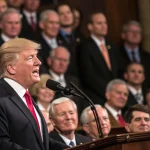A sophisticated wine fraud once duped a member of the Koch family, exposing how even seasoned collectors can be misled by polished forgeries.
The case centers on an elaborate scheme to pass off fake rare bottles as authentic, a con that reached one of America’s wealthiest households.
It highlights the risks in a market where a single bottle can fetch six figures and provenance can be difficult to verify.
The episode also revived debate over industry safeguards, auction house vetting, and the role of science in authenticating prized vintages.
“One wine scammer’s operation was convincing enough to fool a member of the Koch family.”
A market built on trust and scarcity
The fine wine trade runs on reputation, old cellars, and paper trails that can stretch centuries.
Demand surged as wine became an investment asset for global buyers, creating incentives for fraud.
Counterfeiters target rare Burgundy and Bordeaux, where labels and stories move prices as much as taste.
Experts say the problem thrives when documentation is weak and when buyers chase trophies from mythic producers and vintages.
The Koch connection and past cases
The Koch family has long collected art and wine, and one member, billionaire Bill Koch, became a prominent figure in wine fraud investigations.
He famously pursued legal action after buying bottles later challenged as fake, including historic wines tied to Thomas Jefferson.
Separate cases in the 2000s and early 2010s exposed a counterfeit pipeline that mixed forged labels, altered capsules, and fabricated backstories.
One fraudster moved tens of millions of dollars’ worth of rare bottles through private sales and major auctions before a criminal conviction.
Koch’s persistence pushed auctioneers and dealers to tighten vetting and improve disclosure.
How the schemes work
Counterfeit operations often blend credible parts with small lies, making detection hard.
Common tactics include refilling old bottles, reprinting vintage labels, and blending wines to mimic a famous style.
Forgers study capsule crimps, cork branding, and glass molds to create plausible details.
Sellers also craft convincing histories, such as secret cellars and estates with limited access, to explain gaps in records.
Red flags and evolving safeguards
Auction houses now employ specialists to scrutinize glass, paper, ink, and packaging.
Some collectors hire laboratories for isotope analysis, which can reveal whether a wine predates synthetic fertilizers used after the mid-20th century.
Producers have added microprinting, unique bottle molds, and serialized tags to help track provenance.
However, these measures are uneven across regions and vintages, and older wines remain tricky to verify.
- Check provenance across multiple owners, not just a single affidavit.
- Compare label fonts, spacing, and paper aging against known authentic examples.
- Inspect fill levels, cork branding, and capsule condition for inconsistencies.
- Use third-party labs for high-value purchases.
- Buy from sellers with refund policies and transparent sourcing.
Industry response and buyer responsibility
Dealers argue that modern checks reduce risk, but they admit that older stock still depends on trust.
Insurers now ask for detailed documentation and sometimes require scientific tests before underwriting significant collections.
Collectors have become more cautious with so-called unicorn bottles, especially those with dramatic backstories.
Lawyers who handled past disputes say clear contracts and authentication clauses help resolve claims faster.
What this means for collectors
The incident that ensnared a Koch family member shows the stakes in the top tier of the market.
Money, fame, and scarcity can cloud judgment, and smooth operators exploit that pressure.
Seasoned buyers now treat exceptional finds with skepticism, seeking confirmation from multiple sources before closing a deal.
As forgery methods improve, scientific testing and better record-keeping will matter more than ever.
The latest reminder is simple: if a story is perfect and a bottle is priceless, patience and proof are worth the cost.
Collectors should demand traceable histories, push sellers to share evidence, and treat lab work as standard for major purchases.
Watch for broader adoption of track-and-trace tools from wineries, stronger auction guarantees, and cross-border cooperation on fraud.
These steps will not end counterfeiting, but they can make the next sophisticated scam easier to spot—and harder to sell.







